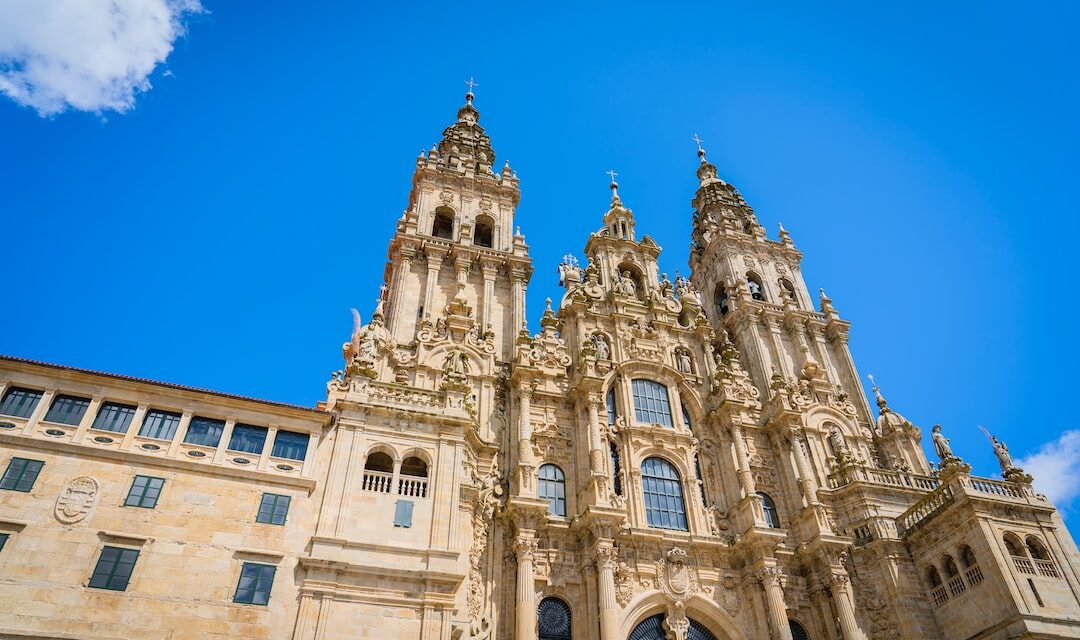Al pensar en what to see in Santiago de Compostela, one immerses in a journey through history, culture, and spirituality. This city, the capital of the region of Galicia in northwest Spain, is a mosaic of heritage and traditions that attracts visitors from all over the world. Its worldwide fame is largely due to being the final destination of the legendary Camino de Santiago, an ancient pilgrimage route that has left an indelible mark on the city.
Introduction to Santiago de Compostela
The historical richness of Santiago de Compostela is reflected in its cobblestone streets, ancient monuments, and vibrant cultural life. From the impressive Cathedral of Santiago, the heart of the city, to the numerous museums that tell the story of the region, there is much to explore. The Galician culture manifests in every corner, offering visitors an authentic and enriching experience. Furthermore, the influence of the Camino de Santiago in the city is palpable, not only in the constant flow of pilgrims who arrive with their stories and hopes, but also in the local infrastructure and economy. This flow of travelers has contributed to the creation of a network of services and a welcoming atmosphere that makes the experience of visiting Santiago de Compostela unique.
History and cultural significance
Santiago de Compostela is a city whose history is intertwined with legend and faith. According to tradition, the remains of the apostle Saint James the Greater were discovered here in the 9th century, leading to the construction of the cathedral and the birth of the Camino de Santiago. This event transformed Santiago into a center of Christian pilgrimage, only surpassed by Rome and Jerusalem in importance during the Middle Ages. The cultural impact of Santiago de Compostela extends beyond its religious significance. The city has been a meeting point for different cultures and a center of intellectual exchange. The University of Santiago de Compostela, founded in 1495, is one of the oldest in Spain and has been a beacon of knowledge and culture through the centuries. The architecture of Santiago de Compostela is a testament to its rich history, with styles ranging from Romanesque to Baroque. The city was declared a UNESCO World Heritage Site in 1985, recognizing its exceptional universal value and the need to preserve its legacy for future generations.
The Camino de Santiago and its impact on the city
The Camino de Santiago is not just a route; it is a cultural phenomenon that has shaped the identity of Santiago de Compostela. Thousands of pilgrims from around the world walk its paths every year, seeking spirituality, adventure, or simply the beauty of the Galician landscapes. The city welcomes them with open arms, offering a triumphant end to their long journey in the Plaza del Obradoiro. The Camino has generated a hospitality economy that includes hostels, restaurants, and other services dedicated to pilgrims. In addition, it has promoted the preservation of traditions and encouraged the creation of cultural events that celebrate the heritage of the route. The Santiago Tourist Office offers information and assistance to visitors, ensuring that their experience in the city is unforgettable. The Camino has also influenced the modernization and accessibility of Santiago de Compostela, with improvements in infrastructure and transportation. However, despite these changes, the city has managed to maintain its historical charm and its atmosphere of tranquility and reflection, making it a unique destination.
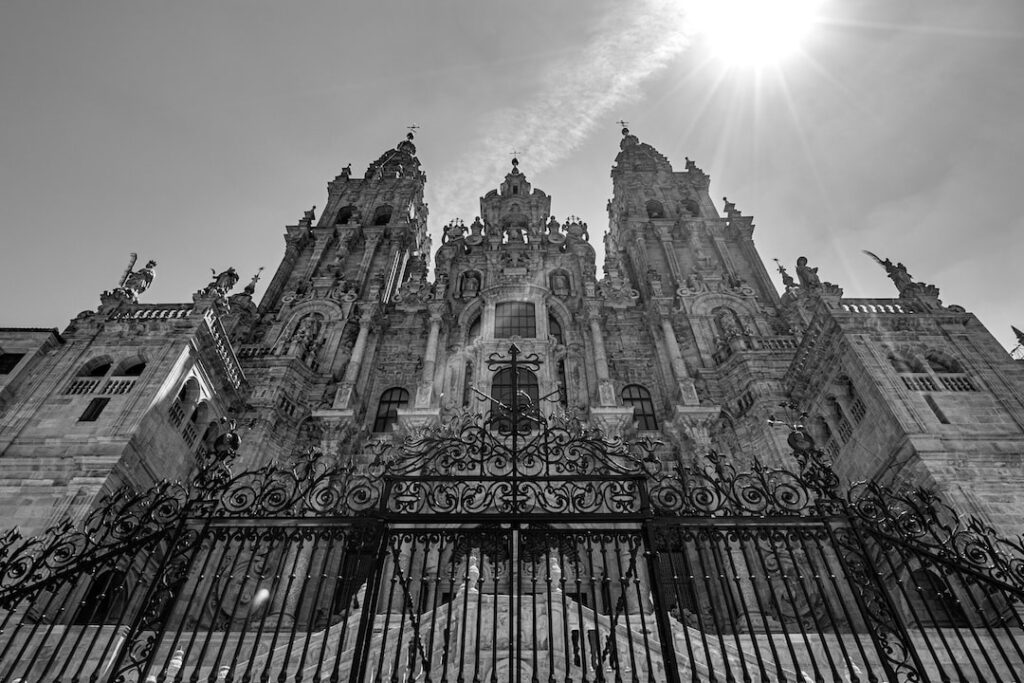
what to see in Santiago de Compostela – descubrirespana.com
Must-See Historical Monuments
Cathedral of Santiago de Compostela and its majestic architecture
The Cathedral of Santiago is undoubtedly the epicenter of everything to see in Santiago de Compostela. This monumental building is not only a place of worship but also a masterpiece of architecture. Its facade, which overlooks the Plaza del Obradoiro, is one of the most photographed and admired in Spain. The cathedral is the climax of the Camino de Santiago and houses the famous Portico of Glory, a gem of Romanesque art. Visitors are amazed by the magnificence of the cathedral, which combines elements from different architectural periods. The Plaza del Obradoiro, with its vibrant and emotional atmosphere, is the perfect place to contemplate the cathedral and feel the energy of the pilgrims reaching their destination. The facade of the Portico of Glory, recently restored, reveals sculptural details that tell biblical stories and capture the essence of Christian faith. The cathedral is not just a monument to admire from the outside; its interior is equally impressive. The naves, the main altar, the crypt, and the botafumeiro, a huge censer that swings during solemn masses, are just some of the wonders that await visitors. The cathedral is a place of reflection and art, where history and spirituality intertwine palpably.
Museums and Cultural Spaces
Museum of Pilgrimages and Santiago
The Museum of Pilgrimages and Santiago is a space dedicated to the rich history of the pilgrim phenomenon and its influence on the city. When wondering what to see in Santiago de Compostela, this museum is a must-stop to understand the cultural and spiritual dimension of the Camino de Santiago. The museum’s exhibitions and permanent collections narrate the evolution of pilgrimage through the centuries, showcasing everything from ancient codices to sacred art and personal belongings of pilgrims. A visit to this museum is not only a journey through history but also a tribute to the diversity and faith that have characterized the Camino.
Galician Center of Contemporary Art
For modern art lovers, the Galician Center of Contemporary Art presents itself as a milestone of architecture and a sanctuary of creativity. Designed by the renowned architect Álvaro Siza, the building itself is a masterpiece worth exploring. Inside, the outstanding works of Galician and internationally renowned artists coexist in a constant dialogue between tradition and the avant-garde. A visit to this center is essential for those seeking unique artistic experiences and wishing to immerse themselves in vibrant Galician contemporary art.
Galician People’s Museum
The Galician People’s Museum is the perfect place to immerse yourself in Galician traditions and culture. While exploring what to see in Santiago de Compostela, this museum offers a unique perspective on the daily life of the Galicians throughout history. From traditional costumes to work tools and folk art, the museum’s collections tell the stories of the people and customs that have shaped Galicia’s identity. It is an enriching space that connects visitors with the soul of the region and its inhabitants.
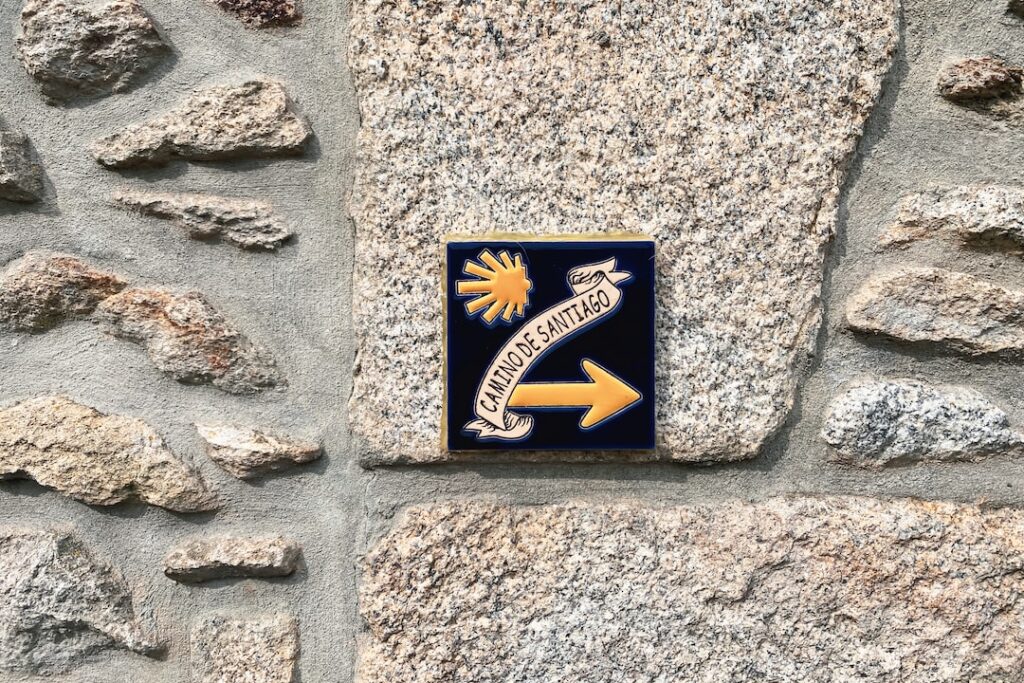
what to see in Santiago de Compostela – descubrirespana.com
Parks and Natural Areas
Alameda Park and its panoramic views
In the search for what to see in Santiago de Compostela, Alameda Park is an oasis of tranquility and natural beauty. This park, which stretches across the city, is the perfect place to enjoy a relaxing walk and admire the stunning panoramic views of the Cathedral of Santiago. The history of the park dates back centuries, and today, it is a meeting point for both locals and visitors. In addition to its serene atmosphere, Alameda Park houses several sculptures and monuments that pay homage to important figures in Galician history. Among them, the statue of ‘The Two Marías’ stands out, two emblematic sisters who became a symbol of the city. The park is also known for its well-kept gardens and variety of tree species, making it an idyllic place for nature lovers and those interested in botany.
Monte do Gozo, the last stop before the cathedral
Monte do Gozo is a landmark for pilgrims on the Camino de Santiago. It represents the last stop where walkers can rest before reaching the Cathedral of Santiago. From its summit, one gets unique views of the city, making the experience of reaching this point unforgettable for both pilgrims and visitors alike. Monte do Gozo is important not only for its spiritual and cultural significance but also for the natural environment that surrounds it. Here, one can enjoy the peace and beauty of the Galician landscape and it is an excellent place to reflect on the travel experience. Additionally, the mountain features a monument commemorating the visit of Pope John Paul II, adding historical and religious value to this natural setting.
Gastronomy and Nightlife in Santiago de Compostela
The best places to taste Galician gastronomy
A visit to Santiago de Compostela would not be complete without immersing oneself in the rich Galician gastronomy. The flavors of Galicia are as deep and varied as its history, offering a culinary experience that delights all palates. Among the dishes you must try are:
– Galician octopus, also known as “pulpo á feira,” a delicacy that combines the perfect texture of octopus with sweet or spicy paprika. – Galician empanada, with fillings ranging from tuna to meat and seafood, each with a crispy and golden crust. – Padrón peppers, small fried green peppers that are a kind of culinary lottery: some are sweet and others surprisingly spicy! To accompany these delicacies, there is nothing better than a glass of Albariño or Ribeiro, white wines with Denomination of Origin that are the perfect complement to the flavors of Galician sea and land. Galician gastronomy is a fundamental pillar of local culture, and the restaurants and taverns of Santiago de Compostela are the ideal setting to enjoy it.
Nightlife areas in Santiago de Compostela
At nightfall, Santiago de Compostela transforms, offering a vibrant nightlife that attracts both locals and visitors. The city has various areas where you can enjoy a drink, listen to live music, or dance until dawn. Some of the most popular areas include:
– The Old Zone, where historic bars and taverns blend with ancient architecture, creating a unique and welcoming atmosphere. – The New Zone, which offers a more modern experience with clubs and cocktail bars for those seeking a night full of energy and current rhythms. La nightlife in Santiago de Compostela is known for its relaxed and friendly atmosphere, making it perfect for socializing and meeting new people. If you are looking for recommendations or more information about the best places to go out at night, the Tourism Office can provide valuable advice to ensure your experience is unforgettable.
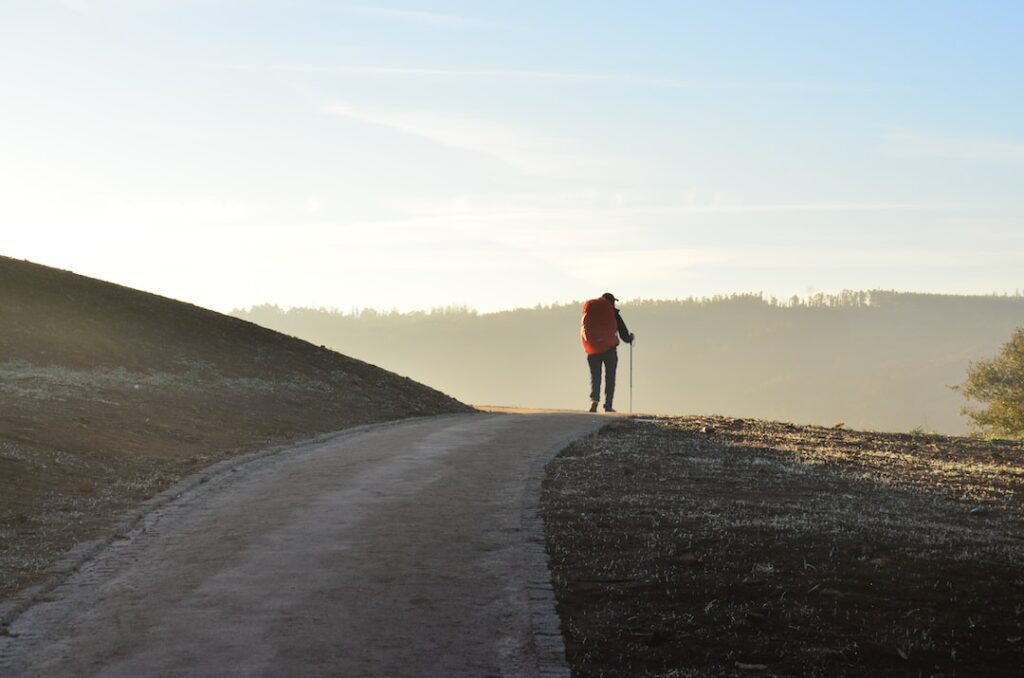
what to see in Santiago de Compostela – descubrirespana.com
What to see around Santiago de Compostela
Exploring Santiago de Compostela is an unforgettable experience, but its surroundings also offer a cultural and natural richness that cannot be overlooked. If you are wondering what to see in Santiago de Compostela and surroundings, here are some suggestions that will make your visit even more complete:
- The City of Culture of Galicia: A modern architectural complex that offers a different perspective on Galician culture.
- Ponte Maceira: A picturesque village known for its medieval bridge over the Tambre river.
- Pazo de Oca: Known as the “Galician Versailles,” its gardens are a baroque masterpiece.
- Rías Baixas: Perfect for a coastal getaway, where you can enjoy the best beaches and seafood in Galicia.
These places are just the beginning of what you can discover around the city. For more information and to plan your excursions, be sure to visit the Tourism Office.
Hiking trails and outdoor activities
For nature and sports lovers, the surroundings of Santiago de Compostela offer numerous hiking trails and outdoor activities. Here are some options to enjoy the natural beauty of Galicia:
- Ruta del Río Sarela: A quiet and shaded path that follows the course of a river, ideal for a relaxing walk.
- Camino de Fisterra: For those who wish to continue the experience of El Camino de Santiago, this route leads to the “end of the world” in the Costa da Morte.
- Ascenso al Pico Sacro: From its summit, you get spectacular views of the region, including the Santiago Cathedral on clear days.
- Cycling routes: There are numerous marked routes for bicycles that allow exploring the region in a different way.
For hiking enthusiasts, the Senderismo en Galicia page offers all the necessary information to plan your next adventure. Whether you are looking for a gentle walk or a more demanding challenge, the surroundings of Santiago de Compostela have something for you. Whether you are interested in history, culture, nature, or gastronomy, there is much to see in Santiago de Compostela in a day or even if you have more time. The options are varied and suited to all tastes and levels of adventure. Don’t miss exploring all that this magnificent region has to offer!
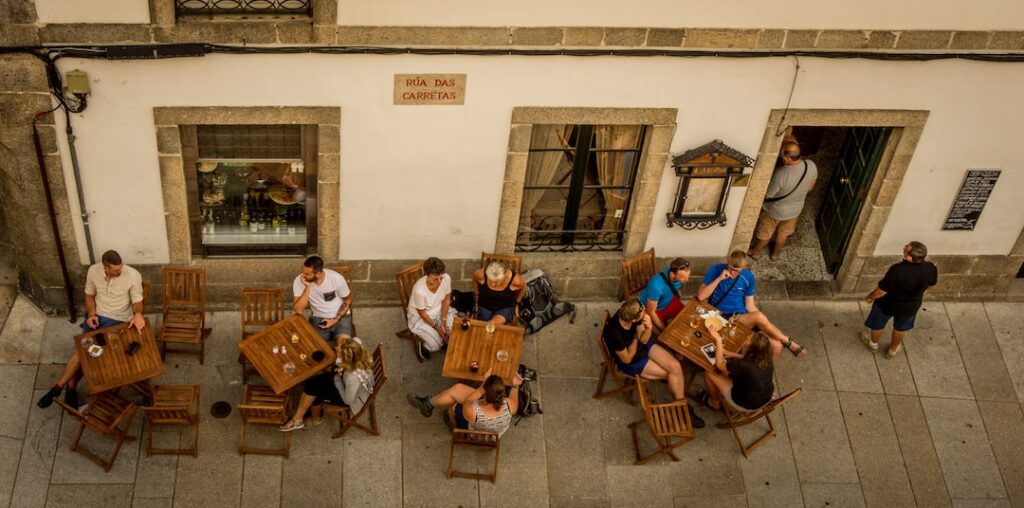
what to see in Santiago de Compostela – descobrirespana.com
Frequently Asked Questions (FAQs) about Santiago de Compostela
How long is recommended to visit Santiago de Compostela?
The ideal duration of a visit to Santiago de Compostela can vary according to the interests of each traveler. However, for those who wish to explore the essentials of what to see in Santiago de Compostela, a minimum of two days is recommended. This allows enough time to visit the Santiago Cathedral, stroll through its historic streets, and enjoy the local gastronomy. For those with more time, adding an additional day can enrich the experience, allowing discovery of the city’s museums, parks, and vibrant nightlife.
Is it necessary to buy tickets in advance for the monuments?
For some of the most visited monuments, such as the Santiago Cathedral, it is advisable to buy tickets in advance, especially during the high pilgrimage season. This ensures access without long waits and better itinerary planning. The Tourist Office of Santiago offers updated information on ticket purchases and can be a valuable resource for visitors.
What measures should be considered for the weather in Santiago?
The weather in Santiago de Compostela is known for being humid and variable, with a high likelihood of rain at any time of the year. Therefore, it is essential to wear appropriate clothing, such as a raincoat or umbrella, and comfortable shoes for walking on cobblestone streets that may be slippery. For detailed information about the weather and to prepare adequately, you can consult Weather in Santiago.
What typical souvenirs can be bought in Santiago de Compostela?
In Santiago de Compostela, visitors will find a wide range of typical souvenirs that reflect the rich Galician culture. Among the most popular are jet jewelry, traditional ceramics, and the famous tarta de Santiago and herbal liqueur. For those interested in taking home a piece of local tradition, the Galician typical souvenirs shops offer authentic crafts that are perfect for gifts or as a memento of your trip. These frequently asked questions address some of the main concerns travelers may have when planning their visit to Santiago de Compostela. With this information, visitors can better prepare to enjoy everything the city has to offer, from its rich history and culture to its beautiful architecture and delicious cuisine.

